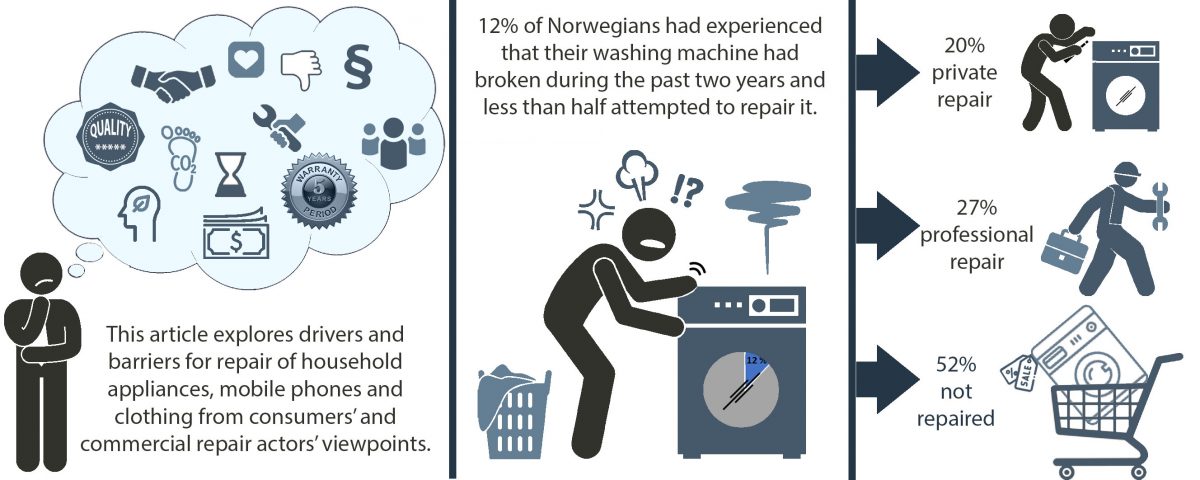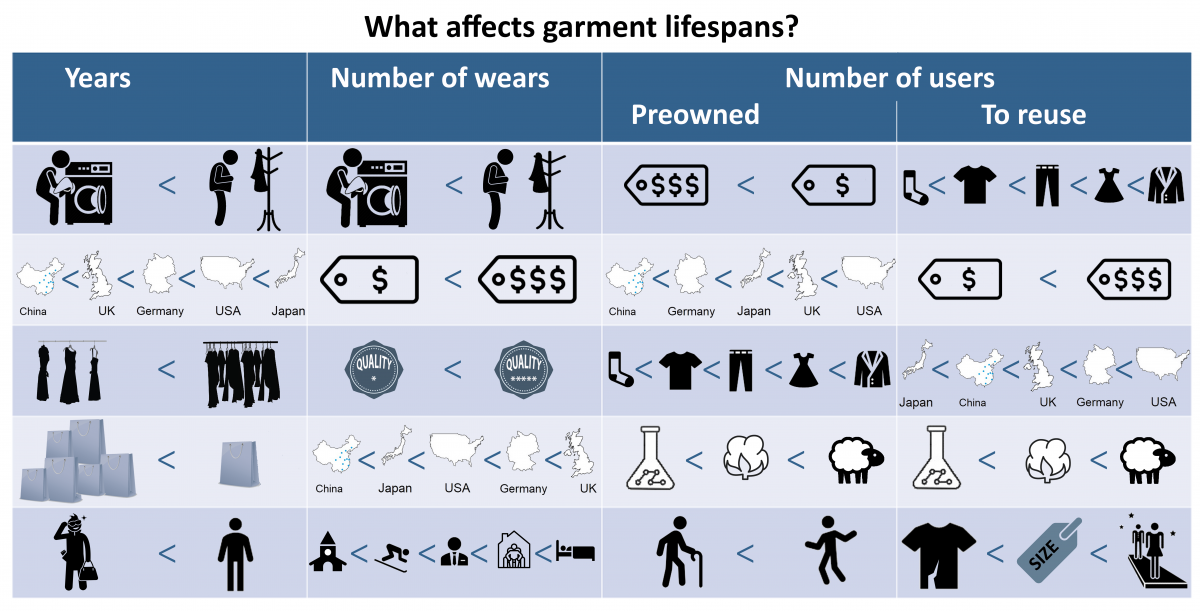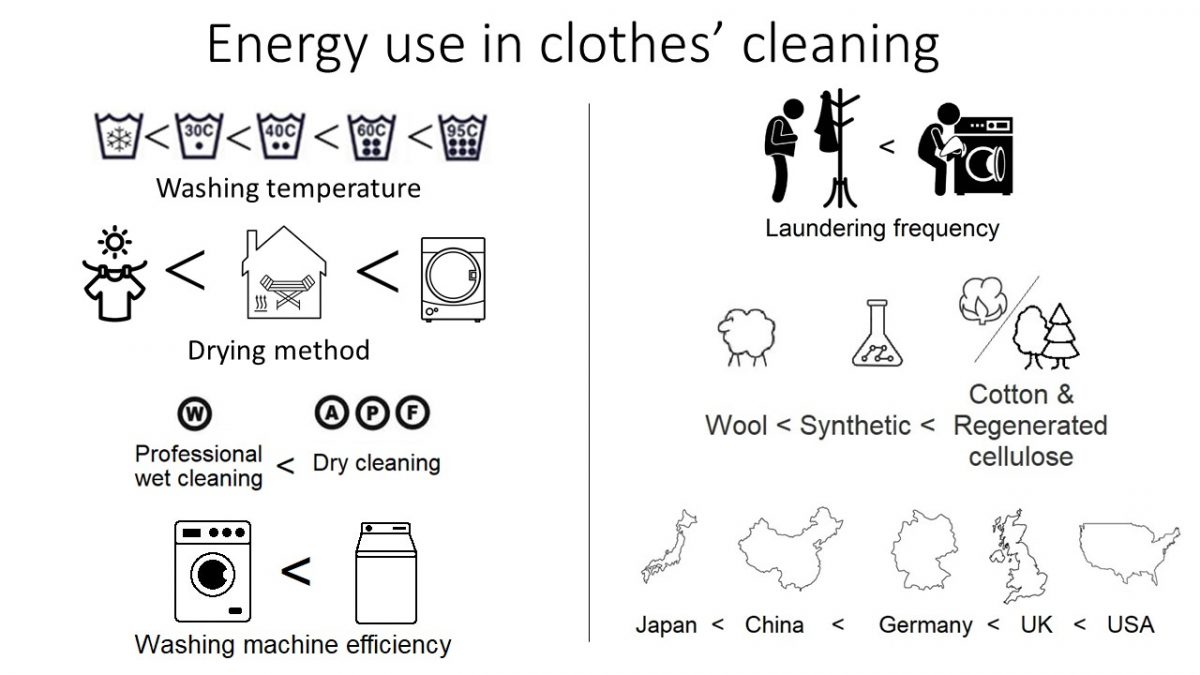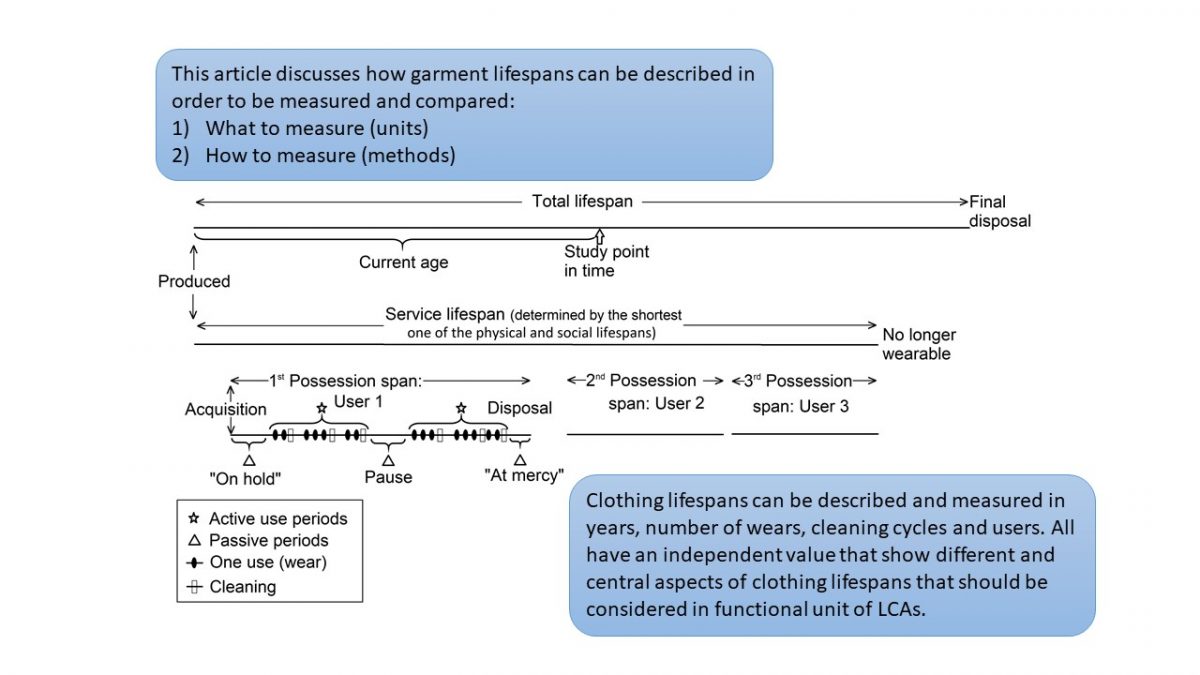Consumer practices for extending the social lifetimes of sofas and clothing
Vilde Haugrønning, Kirsi Laitala & Ingun Grimstad Klepp
Abstract
Consumers play an essential role in efforts to extend product lifetimes (PL) and consumers’ practices can determine how long and active lives products get. Applying the framework of Social Practice Theory, this paper argues that in order to suggest changes to how consumers can contribute to longer product lifespans, research needs to focus on consumer practices. The data material consists of 4 focus group interviews with 38 participants about household goods and 29 semi-structured interviews about clothing.
Previous research shows that consumers’ expectations of product lifetime has decreased, while satisfaction with products is relatively high, which may indicate that product break down and/or replacement is more accepted. Therefore, we argue, it is necessary to focus on social lifespans. Our findings show that products such as clothing and sofas often go out of use or are disposed of before their physical lifespan ends, and it is more common to donate or sell old clothing and sofas than buying the products second hand. There are a number of routinised practices, such as disposal of functional items, that are considered normal, which leads to less reflexivity of seemingly unsustainable practices.
The material in products, or the expectation to the material, is highly influential for practices that can extend the social lifespan, such as maintenance. We conclude that by understanding practices as integrated and influenced by elements of the material, social and cultural, policy interventions may have a greater impact on the social lifespan of products.



